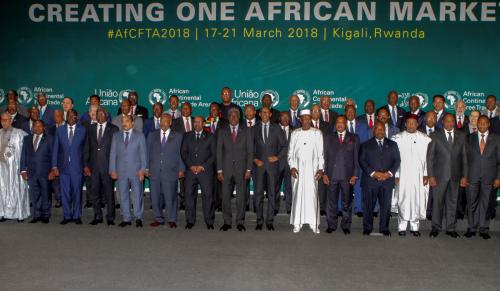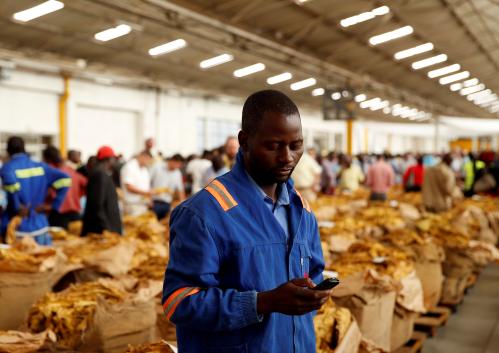Today, May 30, 2019, the African Continental Free Trade Agreement officially comes into force. Now, according to a recent Brookings Africa Growth Initiative policy brief, under a successfully implemented AfCFTA, Africa will have a combined consumer and business spending of $6.7 trillion in 2030.
Indeed, Africa is home to the world’s largest free trade area since the establishment of the World Trade Organization, with nearly every country on the continent joining (Figure 1).
Figure 1: Africa is now the world’s largest free trade area
Source: TRALAC. African Continental Free Trade Area (AfCFTA) Legal Texts and Policy Documents. Accessed: May 29, 2019.
This much-needed agreement and new free trade area are important achievements for the region’s economic development. Figure 2 puts into perspective the current gap between Africa’s intra-regional trade compared to other regions. In this light, the AfCFTA is critical because it could boost intra-Africa trade by 15 to 25 percent by 2040. This increased market access to other African countries has positive spillovers too, including improving the competitiveness of industries and enterprises, increasing opportunities for economies of scale improvements, and boosting the efficacy of resource allocation.
Figure 2: Africa’s intra-regional merchandise trade compared to other regional blocs
Source: Landry Signé and Colette van der Ven, Brookings Institution, “Keys to success for the AfCFTA negotiations,” 2019.
Importantly, not all the work to implement the AfCFTA is done: The brief outlines important steps yet to be completed for a successful agreement (Figure 3). The brief also recommends avoiding complicating the negotiations by adding further layers of complexity to established trade agreements, maximizing the benefits from the AfCFTA by making commitments in line with existing country specific trade advantages, and thinking beyond goods and exploiting the opportunities of the services industry.
Figure 3: The status of the AfCFTA protocols and annexes
Source: Landry Signé and Colette van der Ven, Brookings Institution, “Keys to success for the AfCFTA negotiations,” 2019.









Commentary
Figures of the week: With AfCFTA officially in force, Africa is now the largest free trade area
May 30, 2019